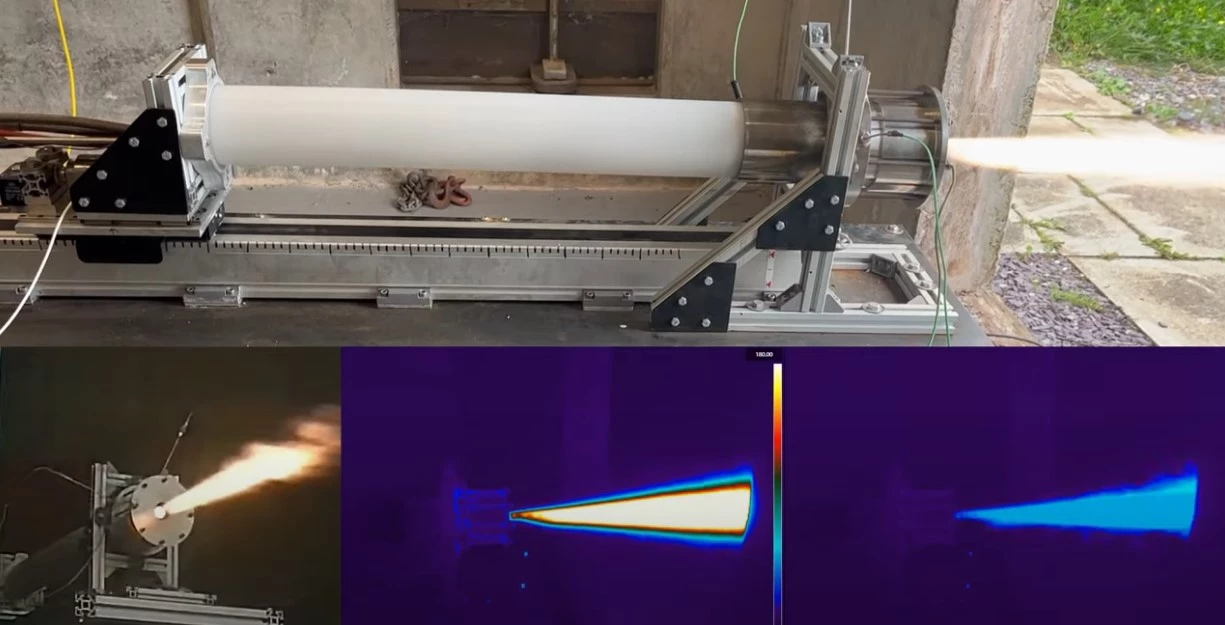If a new rocket developed by University of Glasgow engineers seems to get smaller as it burns, your eyes aren't playing tricks. It is. The new Ouroborous-3 (sic) rocket engine conserves fuel by eating itself as it burns.
In Jules Verne's classic novel Around the World in 80 Days, Phineas Fogg was in danger of losing his globetrotting bet as he crossed the Atlantic Ocean when the ship he's traveling on runs out of coal. His solution was to buy the ship and then have all of its wooden parts burned, leaving the vessel little more than a metal skeleton when he reached Ireland.
Under funding from the UK Space Agency and the Sciences and Technology Facilities Council, the University of Glasgow is turning an updated version of this scenario into a practical way of launching payloads into space more efficiently.
The idea isn't a new one. It's been around since 1938, but it wasn't until 2018 that the Glasgow team in partnership with Dnipro National University in Ukraine were able to get the engineering to the point where it would work in a bench-top setup. Now, they're taking the next step with an unsupported rocket engine that can feed itself with itself while also running stable, throttling, pulsing, and restarting.

The Ouroborous-3 is self-eating because its fuselage consists of a high-density polyethylene plastic tubing that is melted by the waste heat of the engine. The molten plastic is then mixed with the liquid oxygen and propane and fed into the combustion chamber. According to the team, the tricky bit was to get the plastic fuselage to keep its shape without buckling as the rocket shrinks.
The thinking behind all this autophagous engineering is that most of the weight of a rocket consists of the propellants needed to lift the rocket itself and the payload off the ground. In addition, more fuel is needed to lift the fuel needed to lift the rocket, payload, and fuel, and more fuel to lift that, and more fuel to lift that. And so on.
By burning up bits of the rocket, this not only provides more fuel, it also lightens the vehicle, allowing for either more payload or lifting payloads to higher orbits. This makes certain missions, such as launching swarms of nanosatellites, more affordable.

The latest tests of Ouroborous-3 were carried out at the MachLab facility at RAF Machrihanish on the Kintyre peninsula, where it generated a thrust of 22.5 lb. Not much, but a start.
“These results are a foundational step on the way to developing a fully-functional autophage rocket engine," said Professor Patrick Harkness, of the University of Glasgow’s James Watt School of Engineering. "Those future rockets could have a wide range of applications which would help advance the UK’s ambitions to develop as a key player in the space industry.
"A conventional rocket’s structure makes up between five and 12% of its total mass. Our tests show that the Ouroborous-3 can burn a very similar amount of its own structural mass as propellant. If we could make at least some of that mass available for payload instead, it would be a compelling prospect for future rocket designs."
The results of the tests were presented at the AIAA SciTech Forum.
The video below shows a test firing of the Ouroboros-3 rocket engine.
Source: University of Glasgow






